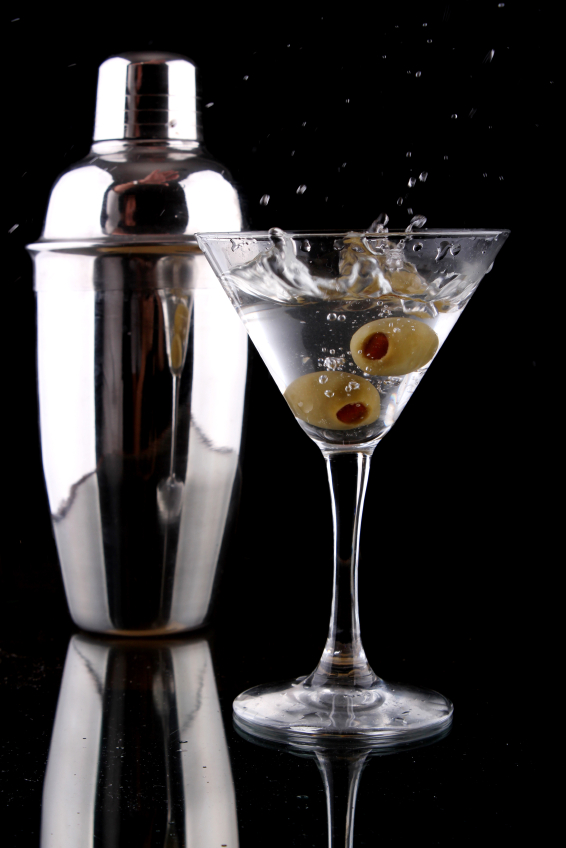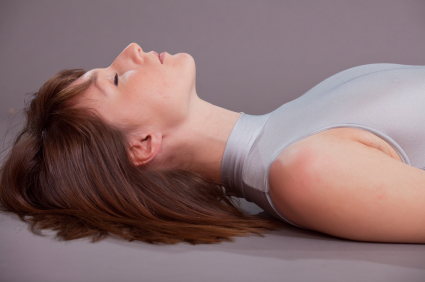Sexual desire, age and a whole lotta debunking…
 I can’t tell you the number of times I’ve stumbled across studies or articles about sexual desire. She does, she doesn’t, he does, it doesn’t, take this pill, patch, supplement, eat this food, wear this article of clothing, blah blah blah. Guess what? A lot of it is in your head (or your environment). No really! At least if you are a woman. Granted, waning hormones, namely estrogen, will likely affect vaginal dryness, pliancy and libido, at least to a certain extent. But there is a whole body of literature that points to the importance of the value of, and satisfaction with, partner relationships.
I can’t tell you the number of times I’ve stumbled across studies or articles about sexual desire. She does, she doesn’t, he does, it doesn’t, take this pill, patch, supplement, eat this food, wear this article of clothing, blah blah blah. Guess what? A lot of it is in your head (or your environment). No really! At least if you are a woman. Granted, waning hormones, namely estrogen, will likely affect vaginal dryness, pliancy and libido, at least to a certain extent. But there is a whole body of literature that points to the importance of the value of, and satisfaction with, partner relationships.
I’ve been writing about sexual desire and sexual dysfunction since I started this blog four years ago. And I continue to be frustrated by the number of solutions and panaceas that overlook integral factors like emotions and intimacy. Consequently, I was truly happy to run across another piece of evidence demonstrating the importance of these factors. This time, researchers looked at a cohort of over 800 women who were as young as 40 and as old as 100 and asked them a number of questions about their emotional health, sexual activity and menopausal status. The results? 90% reported that they were in good health, and about half had had sexual activity within a month of being surveyed, with or without a partner. Notably, a large percentage of these women were using hormones.
However, while a third of women reported that they never or almost never felt sexual desire and a third reported having low sexual desire, most of the women who were sexually active indicated that emotional closeness with their partners was key and in fact, was associated with more frequent arousal, lubrication and orgasm. And, guess what? Although aging has often been thought to be a harbinger of low sexual satisfaction (or activity, for that matter), the percentage of women who reported being sexually satisfied actually increased with age, with about half of women older than 80 reporting that they were always or almost always satisfied! Moreover, these older women also had the same degree of orgasm satisfaction as their younger peers!
One of the study’s most important findings was the fact that sexual activity was not always the litmus for sexual satisfaction, and that emotional and physical closeness were almost equally if not more important. Indeed, lead researcher Dr. Susan Trompeter notes that women in the study “who were not sexually active may have achieved sexual satisfaction through touching, caressing or other intimacies developed over the course of a long relationship” adding that “emotional and physical closeness to the partner may be more important than experiencing orgasm.”
Clearly, this research highlights the need to focus on sexual satisfaction rather than sexual dysfunction or limitations to what is commonly perceived as sexual activity. By ignoring intimacy and partner relationships, we do a huge disservice to women. Moreover, it is certainly refreshing to know that it often gets better, not worse over time.
Read More
Three words for 2012: you are beautiful
This past Monday, I asked readers to peruse the archives and choose a post from the year that resonated most with them. My goal was to pay forward some of my good fortune and gratitude, not only for an audience who returns to learn and share about the trials and tribulations of aging and being a woman, but also, to give thanks for the ability to help someone who has not been so fortunate. Margaret Chaivez commented that this post from April of this year, one in which I responded to a reader who called me an ‘old bag,’ spoke to her, adding that she has “realized that make up and clothes can help me morph into something folks like Jimbo may appreciate. Yet without the confidence and self awareness, it means nothing.”
As women, we are often expected to live up to an ideal that is either unrealistic or unreal. And yet, the pressure that is placed on us to do so often comes from within. Ironically, the title ‘menopause’ has caused a lot of women to turn away from Flashfree, not realizing that the time to start embracing is earlier than the ‘pause, and the time to start preparing is the same.
I want to thank Margaret for taking the plunge and having the courage to embrace her beautiful self. And mostly? For helping me help others.
Happy New Year!
Are you an ‘old bag?’
Evidently if you are over 40, you are at risk of becoming one, especially if you are not ‘nice to men.’
I was struck and a bit stunned by a reader comment that I received this week. The comment was in response to a post about the Cougar Convention, and made a point to denigrate women as much as possible.
This is what Jimbo wrote:
Yes, most all women are desparate. Look how they dress. Look at the makeup. Look at what they show off. It is obvious. They are desparate for sexual attention. Yet, they want the attention as if they are in control and giving themselves as a gift. This is a none truth. Women need to get real and look at themselves and their own behavior. They are desparate for sex and men.
When women get to be 40+, they start to get honest. Heck, there is not much time left to pretend. They need to find a man and be real nice to him before they turn into old bags.
A number of readers have responded to Jimbo’s comment, obviously taking offense. I chose to leave Jimbo’s comment up up for the very reason that I don’t censor; afterall, Jimbo is entitled to his opinion. However, I would like to leave Jimbo with this:
Jimbo –
40 year-old+ women are sexy, beautiful and self-assured. They have lived long enough to have gained the wisdom to allow them to feel comfortable in their bodies. And have a tendency to embrace who they are, sometimes even more than their younger peers. Nevertheless, in all fairness, you responded to a post entitled “Pimp your hide,” in which I referred to certain women attending a convention that encourages them to use their sexuality to attract a younger man. This however, is the exception and not the rule; the majority of women I know do not have fake boobs or plumped lips and have not done liposuction. While many color their hair (present company included), don’t be surprised if you find them out and about without makeup or wearing jeans and a tee shirt. Or better yet, out with men their age or older. Yes, Jimbo, women don’t always ‘dress to kill.’
So, Jimbo, I’d like you to see what a soon-to-be 49 year-old looks like – at the gym and home, with or without make-up. I can assure you; I am not an old bag nor do I ever intend to be one.
What does your 40+ look like? Comment or send me a photo and I’ll post! Let’s make Jimbo eat his words.
Read MoreNewsflash…Before you ‘D’ know the facts. New recommendations from EMAS.
Vitamin D. Lately it’s been touted as the cure-all for all that ails. From bone health and diabetes, to cancer and infections, vitamin D is the go-to supplement. But, do you really need it? And how much should you be taking on a daily basis?
Vitamin D levels are reportedly low in women undergoing menopause and because it is necessary to maintain bone health, there is no question that it’s in great demand by our bodies. This is especially true of fair skinned individuals, women, and people who live at higher altitudes. In fact, research shows that a number of factors can influence how the body synthesizes or produces Vitamin D, including altitude, time of year (e.g. winter) time of day, amount of exposed skin at any given time, skin pigmentation, extensive use of sun protection (i.e. sunscreen, protective clothing, shade) and air pollution). However, the more news that comes out about vitamin D, the more confusion abounds as to its true benefits and how much you should be taking.
Some of that much needed detail is provided in a recent statement issued by the European Menopause and Andropause Society. Rather that put you to sleep with all the details, here a few highlights that sets current knowledge about vitamin D on the correct path:
- Although there have been a ton of studies on vitamin D, linking it to outcomes and risks and benefits in a variety of conditions, evidence for its benefit is strongest in terms of bone/skeletal health.
- Osteoporosis is very common in postmenopausal women leading to increased fracture risk. It appears that adequate levels of vitamin D may help preserve bone structure and contribute to the function of muscles. In studies, women with the lowest vitamin D blood levels were shown to have the highest fracture risk.
- Healthy postmenopausal women can insure that their body’s levels of vitamin D are optimized by exposing skin to the sun, 15 minutes at a time at least three to four times a week during Spring, Summer and Fall. This does not include artificial UV exposure from tanning booths.
- Experts recommend that women supplement sun exposure with no more than 800 to 1,000 IU of vitamin D supplements a day.
- If you are someone at risk for low vitamin D levels, you should see your doctor or health care practitioner for screening to achieve optimal vitamin D levels.
- Women who are obese, have conditions that prevent proper absorption of nutrients (for example, HIV or chronic diarrhea) or have liver or kidney issues need to have tailored vitamin D recommendations.
And the news about over supplementation and toxicity? First of all, you can never get vitamin D toxicity through sunlight (although as we know, too much sun can lead to other problems, like skin cancer). And, toxicity issues have been linked to dosages above 50,000 IU over several months time. Last, women with cancer are likely to convert vitamin D in the body faster, so need lower levels. Again, this calls for monitoring by a health practitioner.
Overall, before you ‘D.’ know the facts. These recommendations are a great start.
Read More
Shaken. Not Stirred.
I have been inspired by my friend Gini Dietrich’s weekly Gin and Topics posts over at Spin Sucks, so much so that I’ve decided to up the ante and bring back a Roundup-like feature to Flashfree (if you’re unfamiliar with the Roundup, think monthly highlight recaps. You can find them here.)
Shaken. Not Stirred is intended to highlight a few choice finds that I believe are worthy of mention in this space. They might not warrant an entire post, but they’ve shaken me up in one way or another to break (or pause, if you will) from our normally scheduled programming and deliver information in a format that is distinct from what you’ve come to expect. In that vein, this feature won’t appear on a regular schedule as I do believe that into every blog should flow a bit of the erratic; after all, that’s what keeps things lively, right?
So, without further ado… I bring you the Shaken. Not Stirred.
Bottom’s up!
- There’s a new kid in town and you may want to get to know him better. So you chat about him online with your other online pals, weigh his pros and cons. And then decide collectively whether or not to befriend him. That’s what the new patient portal Treato is doing. Only this time, the new kid is a medication you might be considering taking for your menopause-related depression and you’re not sure about its side effects. Can you find someone just like you to talk to about it, read/hear their experiences, obtain advice from a medical expert who might be weighing in and then make a more informed decision? Treato is doing just that in one consolidated location. Granted, I’ve not thoroughly vetted the site for accuracy and like any medical information that circulates on the web, ‘whatever is received’ requires vigilance on the part of the user. But I am a huge advocate of leveling the healthcare playing field and patients should be participating in their healthcare. Check it out. And let me know what you think.
- Who knew that weight loss could be so easy? One pair of Zaggora HotPants can help you zap away that unsightly cellulite. How? By incorporating “a comfortable bioceramic material that emits infrared rays to help wearers naturally and efficiently amp up weight-loss regimens. The shorts’ Celu-Lite technology smoothes thighs and other dimple-prone areas by galvanizing the skin’s internal zamboni to promote a deep warming of body tissues and promote lymphatic drainage. This process boosts sweating by up to 80% and aids in eliminating the toxins responsible for cellulite. Gotta give the company props for the term ‘internal zamboni’ but the reality is that nothing has been scientifically proven to rid the body of cellulite.
- Since we are on the topic of do’s and don’ts, why not end this week’s Shaken. Not Stirred with a bit of alcohol-related news? My guess is that many of you have seen the news about drinking and breast cancer and are as confused as I’ve been. My friend Elaine Shattner, over at Medical Lessons Blog, has done an excellent job distilling the facts down to ‘what you need to know,’ much better than I ever could have. Like me, Elaine (who is a trained oncologist, among other things) agrees that women no longer need to be stigmatized by their decisions, writing “Women, in my experience, are generally more vulnerable to the put-downs of others. And so my concern about the BC-alcohol link is that this will, somehow, be used, or have the effect of, making survivors or thrivers or women who haven’t even had breast cancer feel like they’re doing the wrong thing if they go to a party and have a drink. And then they’ll feel badly about themselves.” Do yourselves a favour: read this post.
And if you would, can you do me a favour and weigh in on Shaken. Not Stirred?
Yay, nay or meh?
Read More
Wednesday Bubble: Can yoga decrease insomnia, improve sleep quality?
I love that yoga practice continues to take center stage in Western medicine. Truly, this is mind boggling because rarely, if ever, has an alternative practice been given so much credence within the confines of a medical philosophy that allows little outside the box. However, just a few weeks ago, yoga made the headlines again with data showing that it might be useful for treating lower back pain than standard therapies.
In menopause, yoga practice has been explored for stress relief, to improve wellbeing and as a tonic for vasomotor symptoms. Notably, the latter are considered to be partially responsible for significant sleep issues that occur during and after menopause. Indeed, some data show that up to 81% to 83% of women may have sleep complaints and 52%, insomnia.
Yet, like many strategies, yoga is not a one size fits all practice and there are many branches and types, some being meditative and others breathing, and some more physical than others. These distinctions can make it difficult to standardize studies and apply their results. Still, I was thrilled to stumble across a study evaluating the effects of a specifics sequence of yoga on physical and mental health, and symptoms in menopausal women experiencing insomnia. Importantly, this study used a scientific, randomized controlled design to insure that test conditions were up to par with Western methodological standards.
Basically, researchers assigned 44 menopausal women diagnosed with insomnia to one of three group:
- a control group who ingested 500 mg calcium daily
- a passive stretching group, who participated in two, one hour passive stretching classes a week (including stretching of back, stomach, ankles, knee, thigh, elbow, shoulder, wrist and neck) or,
- a yoga group consisting of two, one hour sessions weekly. These yoga sessions were based on a sequence using stretching positions (asanas) with strong and fast breathing (bhastrika) followed by directed relaxation.
Women in these groups also took 500 m g calcium daily.
The study, which lasted for four months, showed that engaging in a particular sequence of yoga significantly reduced vasomotor symptoms and improved sleep/insomnia severity and mental health compared to passive stretching or simply taking calcium. Women who took the biweekly yoga classes also had higher quality of life scores and better resistance to stress. And while the passive stretching group certainly did not do as well, they did trend towards these benefits as well, especially with regards to the degree of reported stress in their lives.
The researchers believe that regular yoga practice, at least with these particular sequences, alters the nervous system and increases brain concentrations of a potent neurotransmitter – λ-aminobutyric acid – to help improve sleep patterns and reduce vasomotor symptoms. Likewise, stretching may lead to a state of calm that results in reduced metabolism, heart rate, blood pressure, breathing and muscle tension, all of which contribute to stress (or stress reduction).
Granted, this is a small study but it was rigorously designed and suggests that yoga may help sleep issues associated with aging and menopause. I, for one, want to run into a yoga studio. I don’t recall the last time my zzzz’s were not interrupted.
Read More












